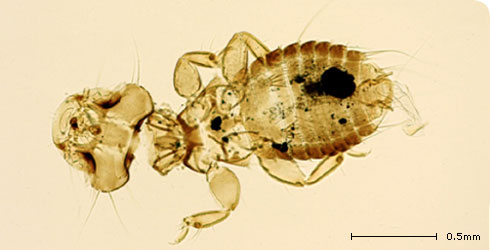Myrsidea nesomimi (mockingbird louse)
Myrsidea nesomimi is a member of the bird chewing lice group - Amblycera.
Amblyceran lice are successful ectoparasites, meaning they live on the surface of the body. They are found on almost any bird species, including domestic fowl. Their whole lifecycle depends on the birds. They chew feathers and skin, suck blood and lay eggs at the base of feather shafts.
Mockingbird populations on the Galápagos Islands have been studied since Charles Darwin visited in 1835. Bird numbers have declined since then, but studying ectoparasite populations - including Myrsidea nesomimi - is helping Museum scientists understand the evolutionary history of the birds and help with their conservation.
Life cycle
The lice spend their entire life cycle living on the host’s body. Adult lice attach eggs to the base of feather shafts, where body heat helps the eggs to develop into larvae and hatch.
Species detail
-

Taxonomy
Myrsidea nesomimi parasitises Galápagos mockingbirds, which were central to Charles Darwin’s early work on evolutionary theory. Find out how the mockingbird louse is helping Museum scientists reveal details of the evolutionary history of the islands.
-

Conservation
Mockingbird populations are declining in the Galápagos Islands. Find out how the mockingbird louse is helping conservation efforts.
Images

A head of the mockingbird louse - Myrsidea nesomimi. Short, barely visible, antennae are a typical character of Amblyceran chewing lice.
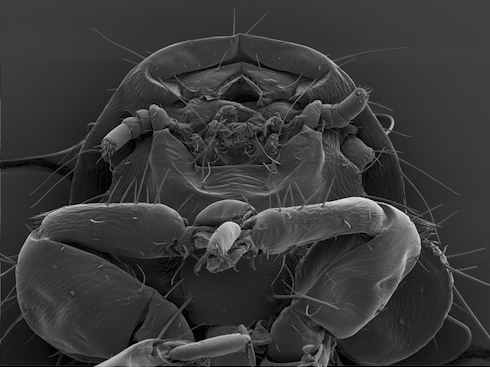
An electron microscopy image of the mocking bird louse (Myrsidea nesomimi). Ventral view of the head and the first pair of legs.
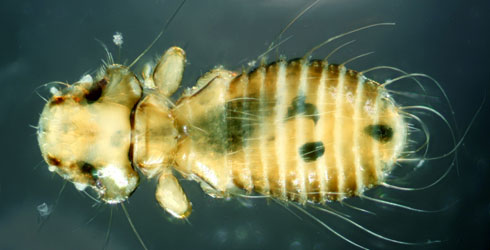
A mockingbird louse specimen prior to DNA extraction.
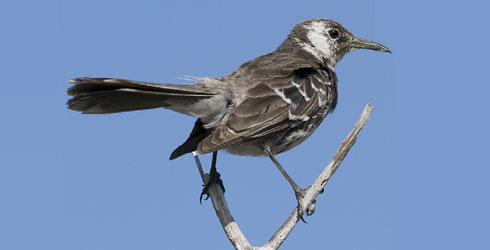
Endangered host species - Floreana mockingbird (Nesomimus trifasciatus).
© Zoological Museum of the University of Zurich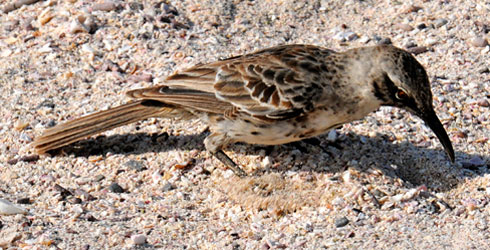
Hood Mockingbird (Nesomimus macdonaldi) is the host of mockingbird louse on Española island.
© V Smith
Author
Jan Stefka
Galápagos Marie Curie Fellow
Department of Entomology
A word from the author
"I have always been interested in how organisms interact with their environment, how they evolve and give rise to new species. Studying these topics using various species of organisms as models is necessary to understand how biodiversity is created on the global scale. Here the close ecological link between hosts and their parasites represents a unique situation in which two otherwise unrelated organisms interact and co-evolve very strongly."
Reference
Palma, R L and Price, R D 2010. The species of Myrsidea Waterston (Insecta: Phthiraptera: Menoponidae) from the Galápagos Islands, with descriptions of new taxa. Tuhinga 21: 135–146
